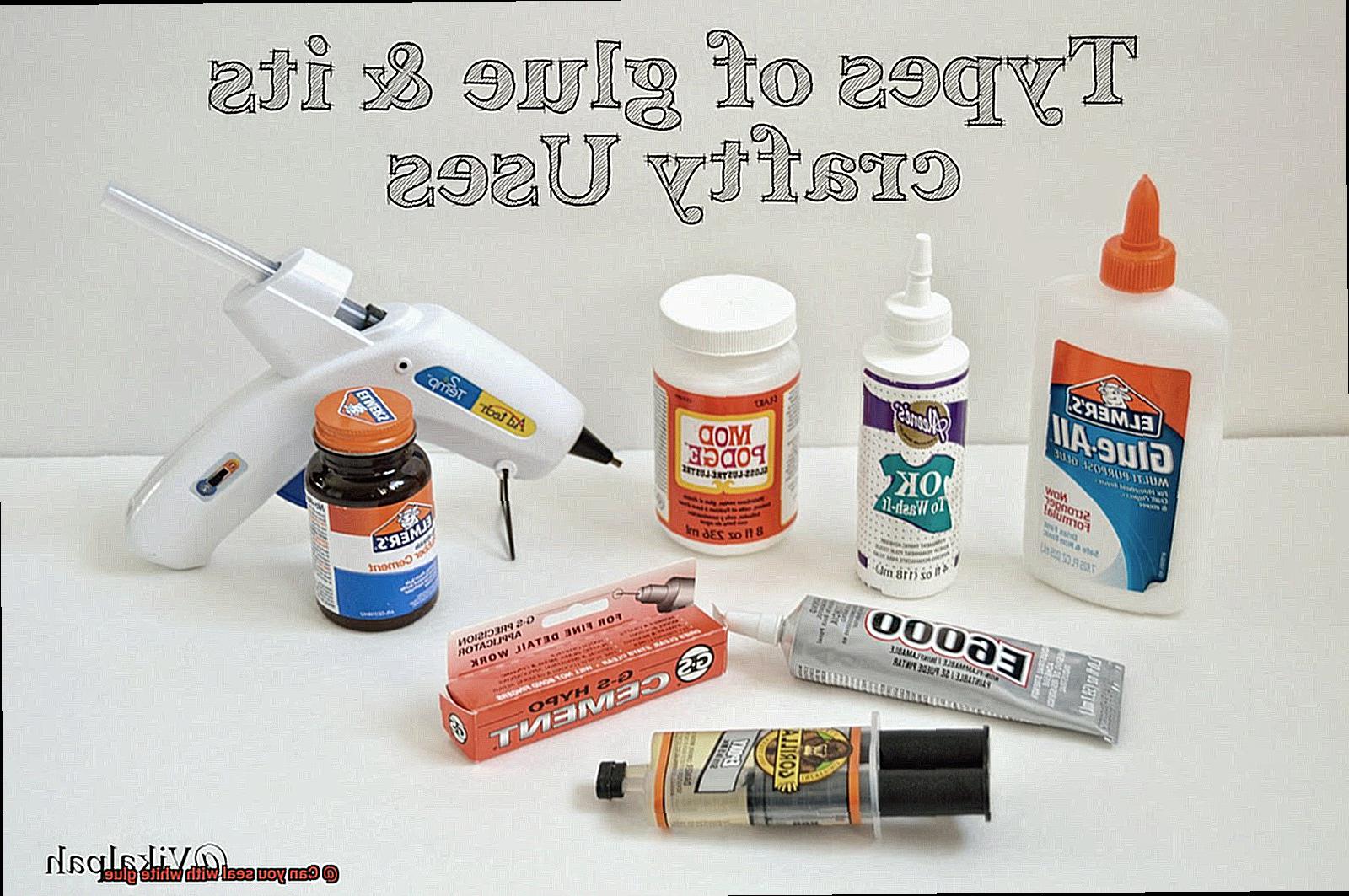Are you tired of breaking the bank on pricey sealants for your art and craft endeavors? Have you ever considered using plain old white glue as a sealant? Yes, it’s true – this affordable and versatile adhesive can also double as a sealant, providing your project with a glossy, protective finish.
But can you really use white glue to seal? Absolutely. White glue, also known as PVA or school glue, is an excellent option for sealing paper, cardboard, wood, and even fabric. It creates a clear, waterproof barrier that not only safeguards your masterpiece but also enhances its overall appearance.
Gone are the days of rushing to the store for an expensive specialty sealant. White glue is readily available at any stationary or craft store and dries quickly, making it perfect for smaller projects. Plus, it’s easy to apply with a brush or sponge.
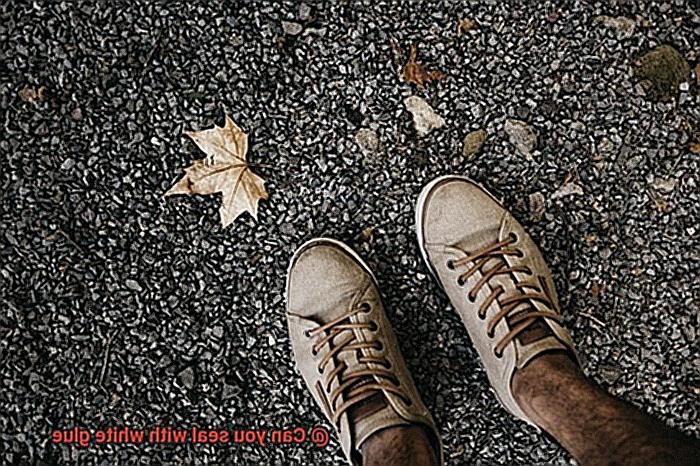
Whether you’re looking to safeguard your paintings or decoupage projects or add a glossy finish to your DIY furniture piece, white glue has got you covered. In this blog post, we’ll delve into the advantages of using white glue as a sealant and offer tips and tricks on how to apply it effectively. Get ready to save some cash while impressing your loved ones with your newfound knowledge.
Can You Seal With White Glue?
Contents
Look no further. White glue, also known as school glue or PVA glue, is not only a popular adhesive for many craft projects but also a useful sealant. However, before you start sealing away, there are some important things to keep in mind.
Firstly, it’s important to note that white glue is not a waterproof sealant. If you need a waterproof seal, you’ll need to use a different type of sealant like silicone or polyurethane. White glue is water-soluble and will break down when exposed to moisture.
But fear not. If you’re sealing a surface that won’t be exposed to moisture, such as a paper craft project or a decorative item, white glue can be an effective and affordable option. It dries clear and can be painted over once it’s dry, making it ideal for sealing materials like paper, cardboard, and wood.
To use white glue as a sealant, make sure the surface you’re sealing is clean and free of debris or dust. Then apply the glue in a thin, even layer using a brush or sponge. Allow the glue to dry completely before applying another layer or using the sealed surface.
It’s important to note that white glue may not work well on all types of surfaces. If you’re working with non-porous surfaces like glass or metal, a different type of sealant may be necessary.
Advantages of Using White Glue as a Sealant
This adhesive offers several advantages that make it an ideal choice for various surfaces and projects.
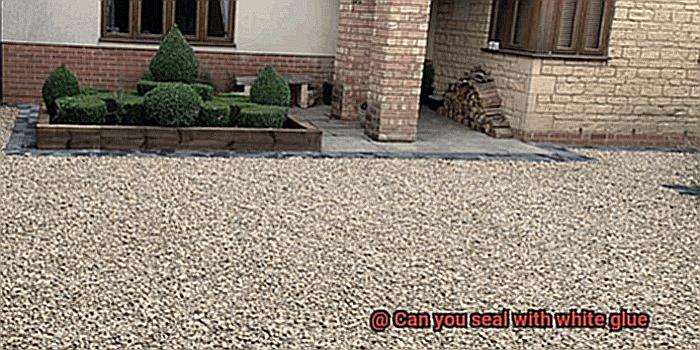
First and foremost, white glue is incredibly accessible and affordable. It can be found at most craft and hardware stores at a budget-friendly price. Plus, its widespread availability makes it easy to find, without wasting time searching for it.
One of the best features of white glue as a sealant is its ability to dry clear. This makes it perfect for sealing surfaces where appearance is critical, such as paper crafts or artistic creations. Unlike other sealants that may dry with a yellowish or brownish tint, white glue maintains its transparency once it dries.
Furthermore, white glue has excellent adhesion qualities, making it perfect for surfaces like wood, fabric, and paper. It forms a robust bond with the surface it is applied to, creating a tight seal that can withstand wear and tear.
Another advantage of using white glue as a sealant is its water-resistant properties when dry. This makes it an ideal choice for outdoor projects or items that may come into contact with moisture or humidity.
Finally, using white glue as a sealant is also an eco-friendly option. Unlike some other sealants that may contain harmful chemicals, white glue is non-toxic and biodegradable. So not only is it safe to use, but also safe to dispose of.
Disadvantages of Using White Glue as a Sealant
White glue, also known as school glue or PVA (polyvinyl acetate) glue, is a staple in many craft and DIY projects. However, it may not be the best option for sealing certain surfaces due to its potential disadvantages.
Perhaps the most significant disadvantage of using white glue as a sealant is its lack of durability. Unlike specialized sealants like silicone or epoxy, white glue is not formulated to withstand exposure to moisture or extreme temperatures. Over time, the glue may lose its effectiveness and break down, leaving your project vulnerable to leaks and other issues.
Moreover, white glue’s limited adhesion properties can pose another challenge when used as a sealant. While it can bond paper and cardboard effectively, it may struggle to adhere to certain surfaces like metal or plastic. This can result in gaps or seams where the glue fails to create a tight seal, compromising the effectiveness of the sealant.
In addition, white glue may not be suitable for sealing certain environments. If you’re sealing an area that will be exposed to high levels of UV radiation or harsh chemicals, white glue may not provide sufficient protection. In these cases, choosing a specialized sealant that is specifically designed for these types of environments is crucial.
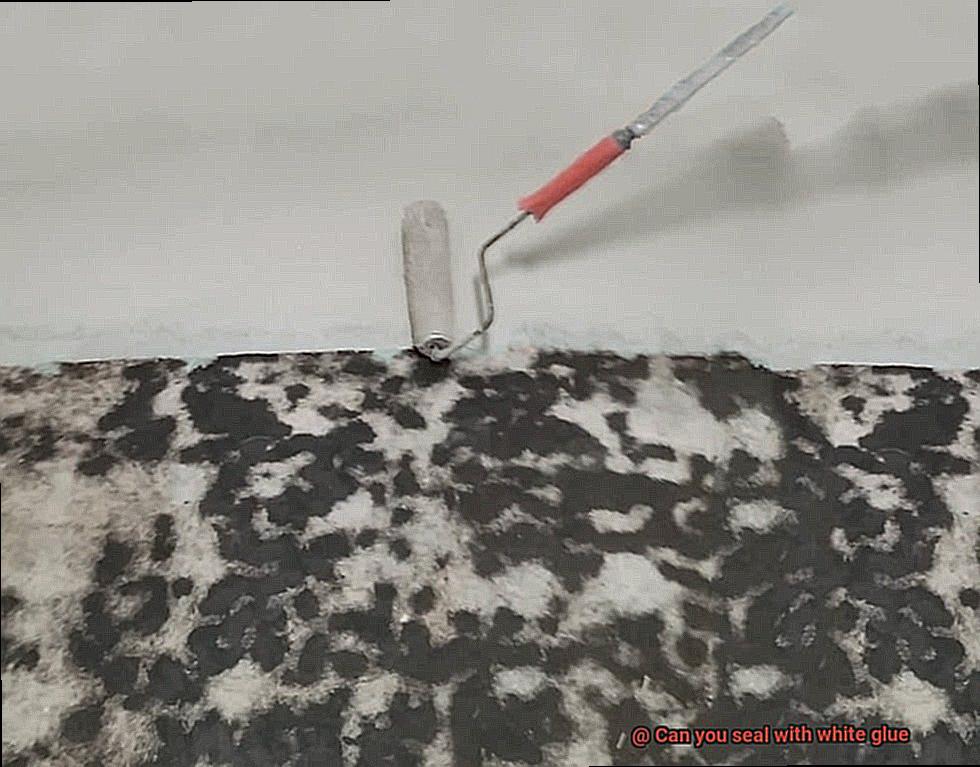
Lastly, while white glue may seem like an affordable option upfront, its lack of durability and limited adhesion properties mean that you may need to reapply the sealant more frequently. This can end up costing you more in the long run and is not a cost-effective option.
Preparation Before Sealing With White Glue

As an experienced crafter, I can tell you that the key to sealing your project with white glue is in the preparation. First things first, make sure the surface you want to seal is clean and dry. Dirt, grease, or moisture on the surface can compromise the adhesion of the glue, so it’s crucial to remove them before applying the glue.
To get your surface ready, take a damp cloth or sponge with mild soap and clean it thoroughly. Rinse it well and let it dry completely before applying the glue. If you’re working with porous material such as wood, a light sanding will help create a better bond.
Choosing the right type of white glue for your project is equally important. There are various types of white glue available, each designed for specific applications. For instance, school glue is perfect for paper and cardboard projects while woodworking glue is ideal for wood.
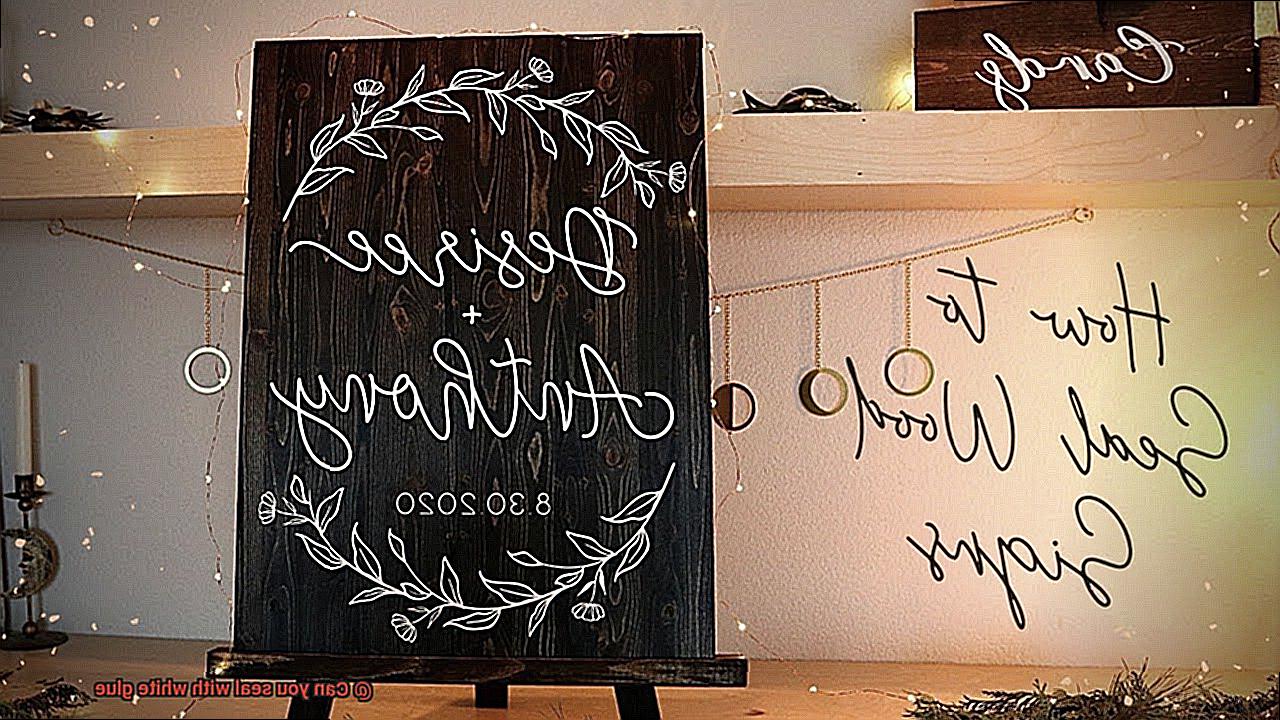
Before using the glue, always read the manufacturer’s instructions carefully. Some types of white glue may require a specific amount of drying time or certain conditions such as temperature and humidity.
It’s always wise to do a test run before sealing your entire project. Apply a small amount of glue on a scrap piece of material and let it dry completely. This way, you can see how the glue dries and how strong the bond is before committing to your project.
Types of Surfaces Suitable for Sealing with White Glue
Today, we’re excited to explore the world of white glue and the various surfaces that are suitable for sealing with this versatile adhesive.
Before we dive in, let’s refresh our memory on what white glue is. Commonly known as PVA glue or school glue, it’s a water-based adhesive that can bond a plethora of surfaces. However, it’s important to consider the type of material you’re working with as some surfaces are better suited for sealing with white glue than others.
One surface that is perfect for sealing with white glue is paper. Whether you’re scrapbooking or preserving important documents, white glue provides a secure and long-lasting seal for paper. To ensure a flawless result, apply a thin layer and allow it to dry completely before handling.
If you’re working on a woodworking project, white glue is a popular choice. It dries clear and can be sanded down for a smooth finish. But remember, before applying white glue, it’s crucial to clean the wood surface thoroughly.
For fabrics, white glue can be used to hem or secure edges, but it may not hold up well on heavier fabrics or items that will undergo frequent washing. So, make sure to keep this in mind before using white glue on fabric.
White glue can also provide a temporary seal for small ceramic repairs. However, it’s not recommended for outdoor use or larger repairs where moisture exposure is likely. In those cases, an epoxy or silicone adhesive may be more appropriate.
Alternative Sealants to Consider
Although white glue is a popular choice, there are numerous other sealants available that might better suit your specific needs.
One option to consider is clear acrylic sealer. This versatile sealant is ideal for arts and crafts projects and can be applied to various surfaces, including paper, wood, and even fabric. Clear acrylic sealer is easy to apply and dries clear, maintaining the natural look of your project while providing excellent protection.
Another popular alternative to white glue is Mod Podge. This water-based sealer can be used for both sealing and gluing and comes in a range of finishes, such as matte, glossy, and satin. Mod Podge works well on paper, wood, or even fabric, making it a versatile choice for any project.
If you need heavy-duty protection for your project, consider using epoxy resin. This strong and durable sealant is perfect for projects that will be exposed to heat or moisture, such as outdoor furniture or countertops. Epoxy resin creates a robust and long-lasting seal that can withstand even the toughest conditions.
Finally, if you prefer an eco-friendly option, beeswax might be the perfect choice. This natural sealant can be melted down and applied to various surfaces such as cutting boards and wooden utensils. It is non-toxic and safe for use on food items, making it an excellent option for sealing kitchen items.
_o8k31i5nNw” >
Also Read: Can you use Elmer’s glue as a sealant?
Conclusion
To wrap things up, white glue is a fantastic option for sealing surfaces in your art and craft projects. It’s not only versatile but also budget-friendly, making it an accessible choice for many creators. The clear, waterproof barrier it creates offers protection and enhances the overall appearance of your masterpiece.
It’s essential to keep in mind that white glue may not be suitable for all surfaces or environments. While it’s an excellent option for sealing surfaces where appearance is critical, its lack of durability on certain materials could be a potential disadvantage.
Preparation is key when using white glue as a sealant. Be sure to clean and dry the surface before applying the glue and choose the right type of white glue for your project.
If you need heavy-duty protection, epoxy resin or clear acrylic sealer might be better suited to your needs. Alternatively, Mod Podge is another popular alternative that works well on various surfaces.
In summary, while there are other options available if you need specialized protection or durability, using white glue as a sealant remains an excellent choice for many craft projects due to its accessibility, affordability, ease of application, and transparent finish.

